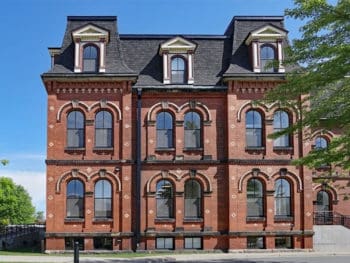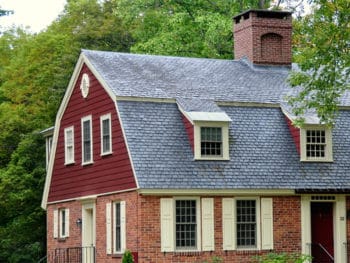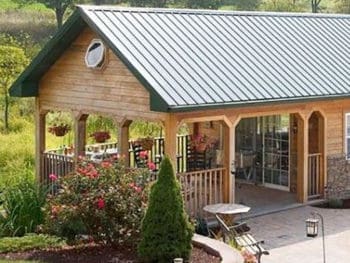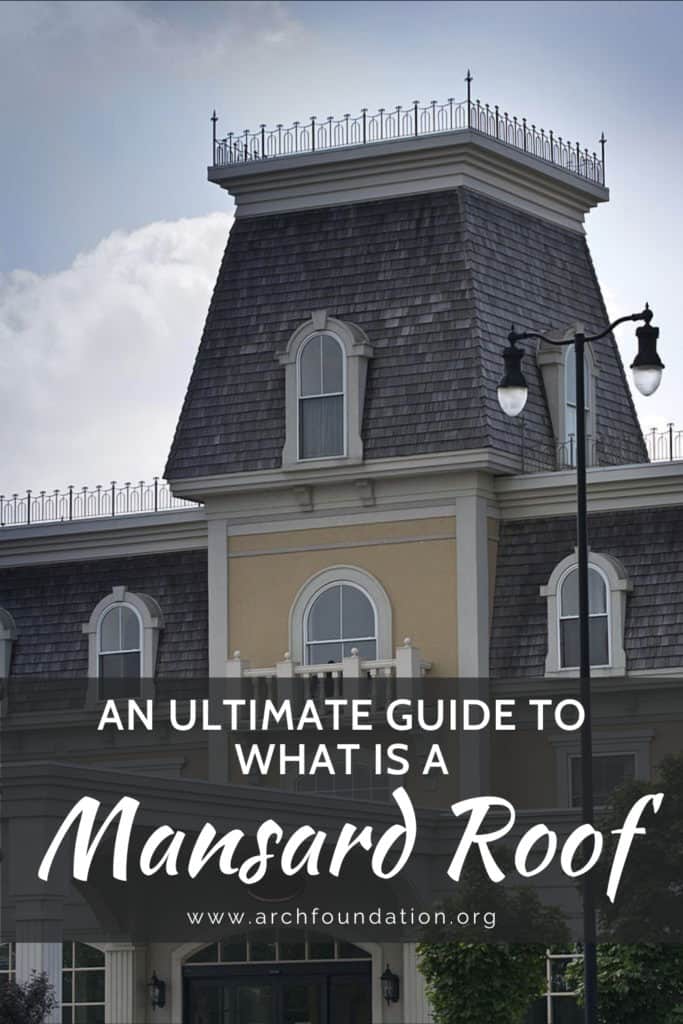An Ultimate Guide to What Is a Mansard Roof
“Another Roof, another Proof!”
Another is the Mansard roof what I am going to discuss here in the post. It will be a detailed guide on its structure, types, history, and usual questions asked by the public. Each thing on Earth has some sort of history, and so does the Mansard. I must say that it’s one of the advantageous roof forms that even led people in certain areas to save their taxes.
Therefore, choosing the ideal roof type is upon your hands. They just don’t serve the fundamental purpose of protection but also let your home look more architectural and a sort of organized. A roof defines the overall style and looks of a house. They can offer you extra living space while making your home more energy-efficient, resilient, and weatherproof.
Know what is a Mansard roof, watch this video!
What Is a Mansard Roof?

A four-sided or French roof with double slopes on each side is called a Mansard roof. It forms a low pitch and mostly known as a curb roof. The concept of this roof is said to be originated in the 16th century. However, they gained popularity in the 17th century by Francois Mansart.
The Mansard roof is a combination of Gambrel and Hip roof. Well, the roof particularly defines the form of art rather than just making an architectural design for functionality. You may not see such roofing style in most traditional homes, but they can be easily found in barn houses and similar modern places.
As the roof is combined with two slopes on each side, its lower slope makes the steeper angle than the upper one and also comes with multiple dormer windows. So, you will experience a comfortable and spacious area with few restrictions and a fantastic attic.
In Europe, especially the design of the Mansard roof plays a significant role in properly utilizing the attic’s interior space. It not only allows its maximum use but also enhances the overall décor. The interiors of this roof can be transformed into a building’s extra storey while allowing your home to look more inhabitable and fully functional.
However, you can have various design-specific details in multiple exciting ways. The slopes are not that abrupt, so that you will have more space in an open floor plan. You will also have an option to turn the upper apartment into lofts or an independent floor with separate apartments. There are skylights also in addition to windows within a Mansard building.
History of Mansard Roof
Almost in the 1550s, Mansard roofs were designed. Yet, the Mansard style got famous in the 17th century by Francois Mansart, who was a renowned architect of the French Baroque period. Their fashionable existence came during the reign of Napoleon III during the Second Empire. So, that was generally a period of Paris rebuilding in the 1850s.
And, later in the 19th century, Mansard roof became a conventional architectural design not just for significant structures but also for many private houses in both North America and Europe, as I mentioned earlier, once the houses in France were taxed by several floors or height below the roof. It was where the Mansard roof’s peculiar design allowed people to even add extra floors without paying taxes.
Italy and England were the two places where the Mansard structure gained popularity before Europe. Slowly, it was accepted in many other Western countries such as Canada, the United States of America, and so on. In both France and Germany, Gambrel roofs are referred to as Mansards.
Different Styles of Mansard Roof
The double-pitched and steep styles are two main Mansard roof styles that are mostly distinct based upon the drainage system of snow and water. More prolonged and sharper slopes are better for the efficient drainage system. On the other hand, the style of the double-pitched drainage system forms the most reasonable one comparatively.
Sometimes a single-plane conventional roof is misunderstood as a Mansard roof. Well, there is also a concept of curb hip roof and curb gable roof to distinguish between Mansard and Gambrel. Curb hip roof refers to the roof with slopes on all four sides. Whereas, curb Gabel roof refers to the roof with slopes on just two sides, which are commonly known as Gambrel roof.
Building Gambler Roof

Mansard roof is always on the low-pitch. On the other hand, Gambrel roofs originate in sharp and long points at the main beam of the roof. Areas, particularly Germany and France, made no such distinction and simply called both of them as Mansards.
Well, hip roofs are said to be more stable than gable roofs. Their inward slope makes them more durable and sturdy. Plus, they are great for both snowy and high wind areas. However, they are expensive and need to be built with complex designs. There are various forms of hip roofs, such as half-hipped, simple hip, cross-hipped, and Note.
Watch this video to know more:
Hip Roof Framing

Let’s see this video to collect more understandings about Hip Roof Framing:
Mansard Roof: Roofing Trend of 2021
Various roofing trends are out to come in 2021, expecting the Mansard as one of the appealing and acceptable roofs. However, the reliability and quality of both design and materials are considered over their popularity. So, let’s dive into what serves as best to the consumers.
Roof styles may vary, and even most of the homeowners want something different that stands out. You may be thinking of a flat roof as it’s easier to make. But, have you ever considered its absence of slopes? It would not be that useful because the drainage system is worse. So, anyone having such roofs would require extensive waterproofing methods.
Also, the snow-prone regions can’t have options of such roofs. So, what left behind are mostly the Mansard roofs with two or four slopes. They are functional and attractive as well. A gable roof is mostly considered here for an attic. Plus, you will have an extra storage space in the room. The slope allows water to get off quickly the roof. Also, the debris and leaves would not be accumulated here.
On the other hand, hip-style roofs are ideal for warm climate areas. Hip roofs have two short as well as long sides, which further slant down the ridge in the middle. It also offers several benefits, such as eaves as overhangs. It helps keep the room cool, especially windows receive lots of sunlight.
And, if you want to maximize living space by also adding a floor, then Mansard designs are the most accredited in 2021. Even though it’s a less-known variation of hip-roof, the structure is renowned and make up an excellent architectural design.
Pros and Cons of Mansard Roof
Just like many other styles, the Mansard roof also suffers from both pros and cons, as given below.
Pros of Mansard Roof
- Aesthetic Appeal
All styles of Mansard roof add elegancy to the entire décor. Not just the maximization of living space, but you can provide an aesthetic value to any building. It’s mostly an essential part of French architecture during the Renaissance period.
- Future Additions
As you know that the first slope of the Mansard roof is steep, which will let you even make an extra floor on top of the home. It further offers excellent flexibility in the long run and makes it cheap to have additions. As a result, it would be an ideal structure for those planning to raise a family and wants some extra space.
Mansard roof comparatively provides extra area even if you don’t add any compartment or floor over the ground. Because of the steepness offered by all the four sides, it will become super-efficient to add an extra bedroom or loft if needed.
- Ideal for Both Urban and Rural Areas
The concept of the Mansard roof is suitable for both urban and rural areas. Who doesn’t want extra space, by the way? Also, the construction is pretty simple, with the requirements of a few materials. It will also help to keep down the cost of the roof.
The roof is also a perfect fit for storage buildings and outdoor sheds. Its shape can provide you a lot more than you desire.
Watch this video to know more about Mansard Roofs:
Cons of Mansard Roof
- Cost
Sometimes the process of building such a roof proves out to be complex and lengthy. So, it would take you more cost, labor, and raw materials to build up a productive structure. This thing can be prohibitive for homeowners operating under a tight budget.
- Maintenance
Mansard roofs require strict maintenance. Against traditional roofs, they consist of slopes for which you have to take extra care. The roofs are also susceptible to damage as compared to other ones, so that could be a significant reason in their regular maintenance.
- Weather Resistance
Mansard roofs may not prove efficient for areas receiving high-end rainfalls or snowfalls. Even though they have the best drainage system, they are still insignificant in handling rapid and large amounts of water. It means that a large amount of water can accumulate on the upper roof, which may cause mold growth and leaks inside the homes.
Some Frequently Asked Questions
Let’s read out some frequently asked questions upon Mansard roofs and its other angles.
Conclusion
So, this is how a Mansard roof can be defined. After discussing what a Mansard roof is, you can carry on to make your decision relatively. Exploring different architectural roofs could be a grand experiment in the 21st century. You will experience more space, décor, and functionality with roofs such as Mansard.

